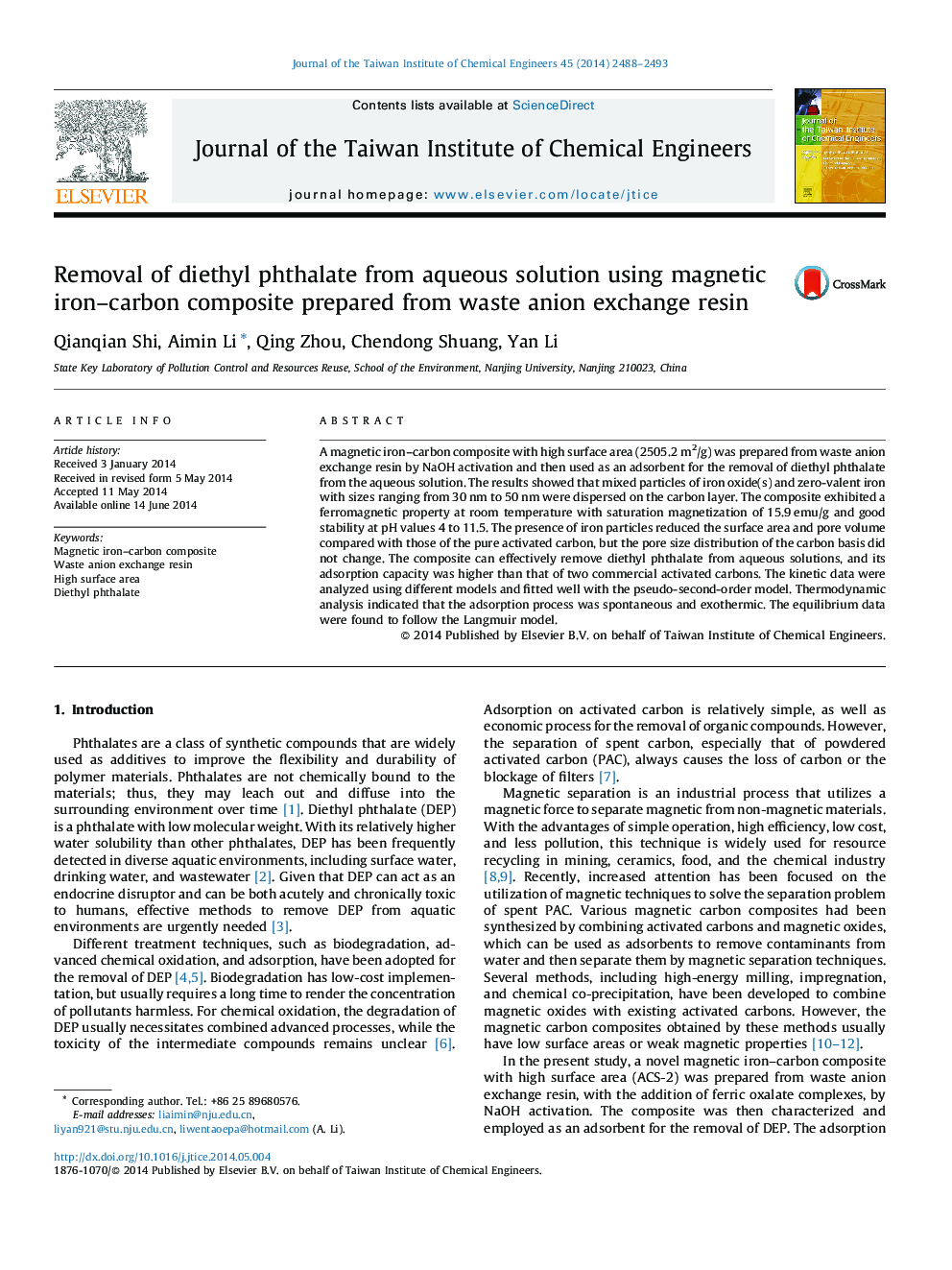| کد مقاله | کد نشریه | سال انتشار | مقاله انگلیسی | نسخه تمام متن |
|---|---|---|---|---|
| 691513 | 1460430 | 2014 | 6 صفحه PDF | دانلود رایگان |
• Waste anion exchange resin was used as the precursor of the composite.
• The composite had a high surface area (2505.2 m2/g).
• The composite exhibited a good stability over the pH from 4 to 11.5.
• The composite can effectively remove diethyl phthalate from aqueous solution.
A magnetic iron–carbon composite with high surface area (2505.2 m2/g) was prepared from waste anion exchange resin by NaOH activation and then used as an adsorbent for the removal of diethyl phthalate from the aqueous solution. The results showed that mixed particles of iron oxide(s) and zero-valent iron with sizes ranging from 30 nm to 50 nm were dispersed on the carbon layer. The composite exhibited a ferromagnetic property at room temperature with saturation magnetization of 15.9 emu/g and good stability at pH values 4 to 11.5. The presence of iron particles reduced the surface area and pore volume compared with those of the pure activated carbon, but the pore size distribution of the carbon basis did not change. The composite can effectively remove diethyl phthalate from aqueous solutions, and its adsorption capacity was higher than that of two commercial activated carbons. The kinetic data were analyzed using different models and fitted well with the pseudo-second-order model. Thermodynamic analysis indicated that the adsorption process was spontaneous and exothermic. The equilibrium data were found to follow the Langmuir model.
Journal: Journal of the Taiwan Institute of Chemical Engineers - Volume 45, Issue 5, September 2014, Pages 2488–2493
